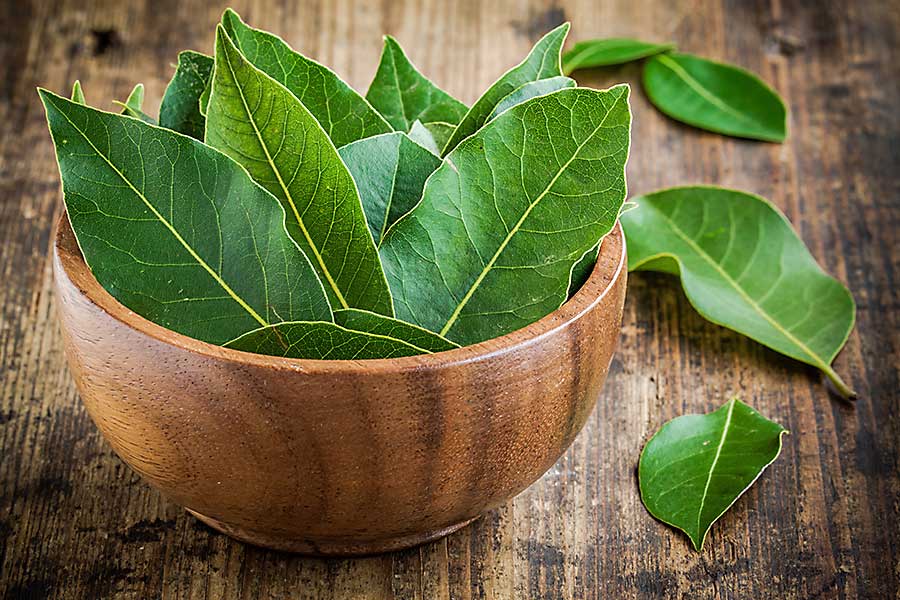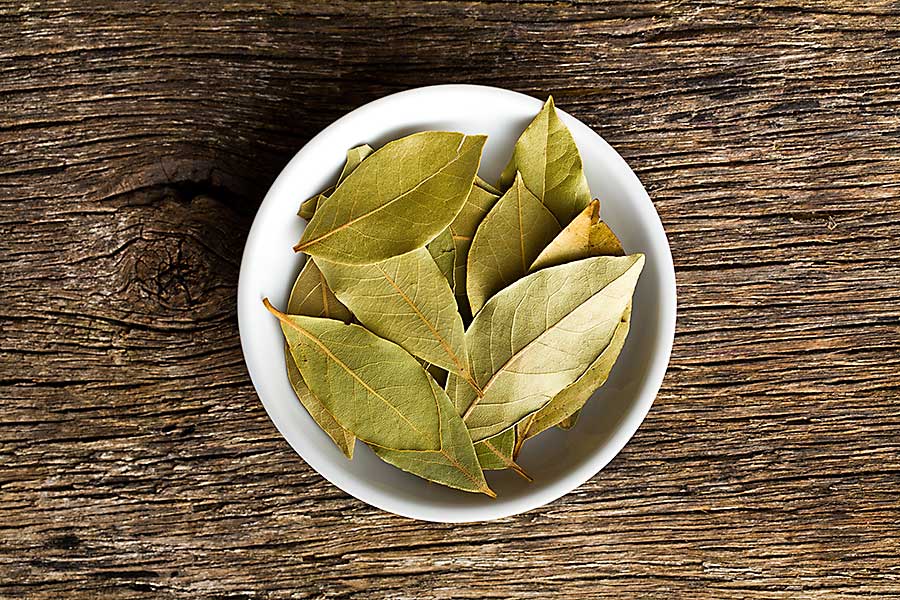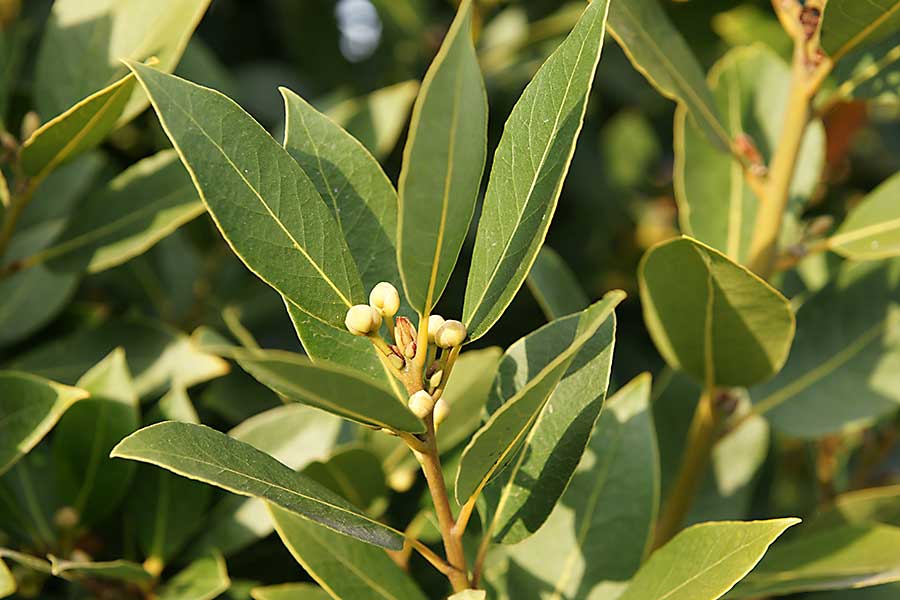Bay Leaf
Bay leaf, also known as laurel leaf, is an aromatic leaf that is often used to flavour foods from various cuisines. Used fresh, dried, or ground, bay leaves are more fragrant than they are tasteful. When eaten fresh, they have a bitter, pungent, and sharp taste that is less noticeable, while a dried bay leaf is more fragrant, herbal, and floral in taste. When crushed, bay leaves release a pleasant, aromatic fragrance that adds a distinct edge to food, similar to oregano and thyme.
Bay leaves most frequently come from the bay laurel tree, although there are many types and variations (see below). The bay laurel leaf has a shiny and olive green top surface when fresh. The bottom surface, on the other hand, features duller colours that range from olive to brown, as well as highly visible ribs and veins. Bay leaves have been in use since the time of the Ancient Greeks, and are heavily used today in Mediterranean, American, and some Asian cuisines.
Variations of bay leaf
Bay leaves come from the plant families of Lauracae (laurel) and Myrtaceae (myrtle) trees, however the most commonly available are from the bay laurel tree. Other plants that produce bay leaves include:
- California bay leaf – Similar to the popular bay laurel, but with a stronger taste. Also known as California laurel, Oregon myrtle, and pepperwood.
- Indian bay leaf – These come in two variations. One is shorter and lighter in colour than bay laurels, with a long vein running down the middle. The other type is twice as long as bay laurels, wider, olive green in colour, and with three veins running down the middle. This second type of Indian bay leaf tastes more like cinnamon, and hails from the same family (Cinnamonum tamala).
- Indonesian bay leaf – Otherwise known as Indonesian laurel, this type of bay leaf is less available in other parts of the world and more often used to flavour meat than vegetables.
- West Indian bay leaf – Comes from the West Indian bay tree (pimenta racemosa), and is used both in cooking as well as in popular aftershave and cologne Bay Rum.
How to use bay leaves in cooking
Bay leaves are used to add flavour in stews, soups, fish, meat, sauces, and even in confectionaries. The leaves are used in Indian and Pakistani cuisine to flavour rice dishes such as biryani, as well as in the ubiquitous garam masala spice mix. They are a fixture in European cuisine, especially in the Mediterranean, flavouring everything from meat and seafood to sauces and stews.
They can be used crushed, ground, or whole, however they are most often used whole. This is because the leaves must be removed before eating or serving a dish. Not only is it difficult to chew a bay leaf, but it can cause a lot of discomfort as they are abrasive in the GI tract. Crushed bay leaves are more flavourful than whole bay leaves, and they will be tied in a muslin cloth or placed in a tea infuser for easier removal. Ground bay leaves do not need to be removed before eating, as they are too fine, but they release an intense flavour that can easily overwhelm a dish. For that reason, they are most often used in spice mixes, and very sparingly.
Medicinal benefit of bay leaves
Bay leaves are not only fragrant, but impart their own medicinal benefits as well. The major fuctional properties of bay leaves are hypoglycaemic, anti-ulcerogenic, anti-fungal, and anti-microbial. They are also high in vitamin A, vitamin C, iron, vitamin B6, and manganese. Bay leaves can also be used to ward off insects, due to their strong fragrance.
Private Chefs, Art of Dining
CHEFIN is a private chef platform that’s reimagining social dining.
You can easily connect with 1 of our 250 private chefs and treat your guests to restaurant-quality dining experiences in the comfort of your own home, office or chosen venue. From high-end dining to quirky social food experiences, the CHEFIN platform makes it effortless for you to access gourmet food that’s worthy of a Michelin-starred establishment.
What you get:
-
- Your very own private chef who is vetted and insured,
- A customised menu for your needs,
- 24/7 concierge support,
- Complete post-dinner cleanup,
- A fun, stress-free, and unforgettably dining experience!


